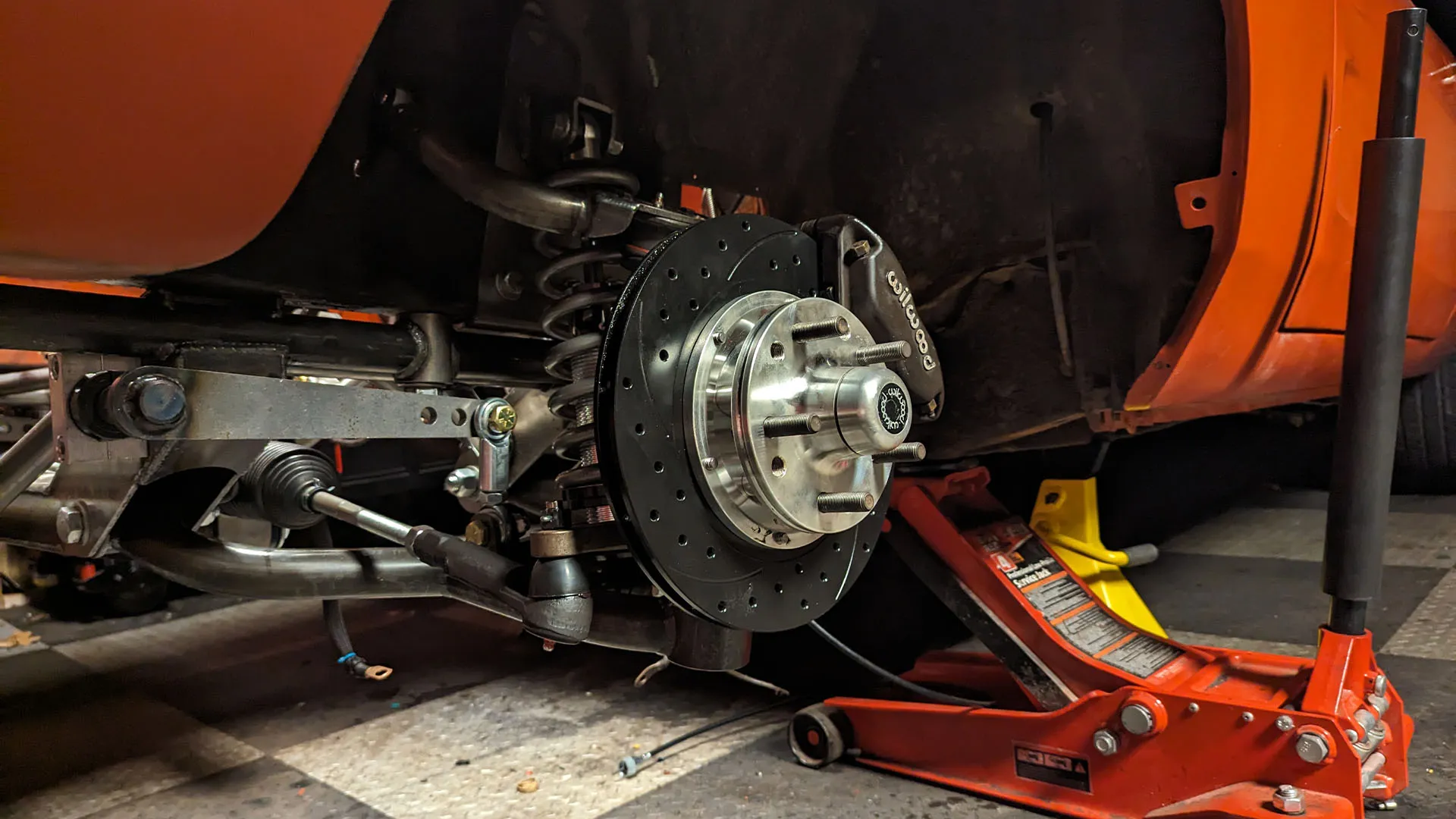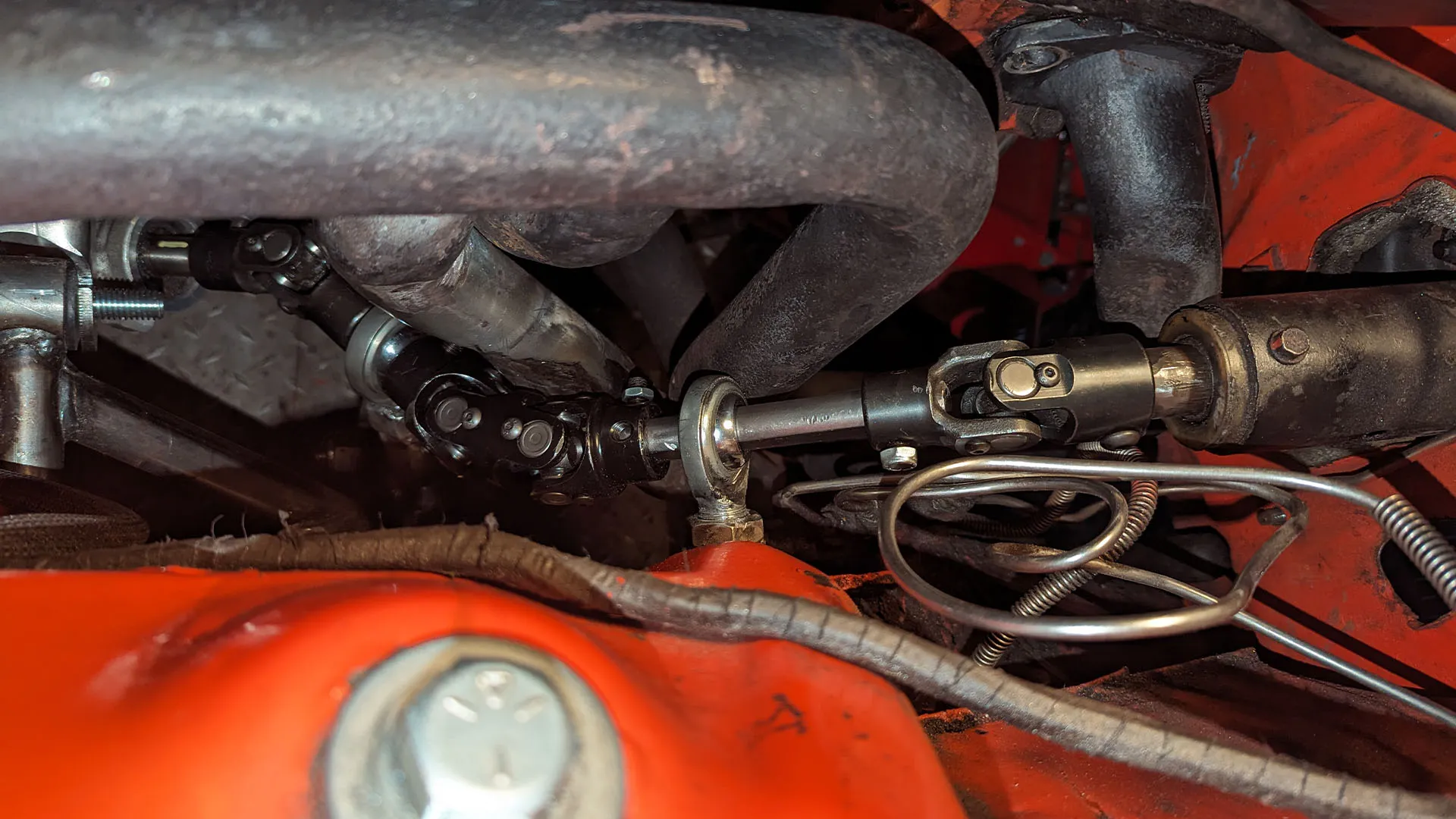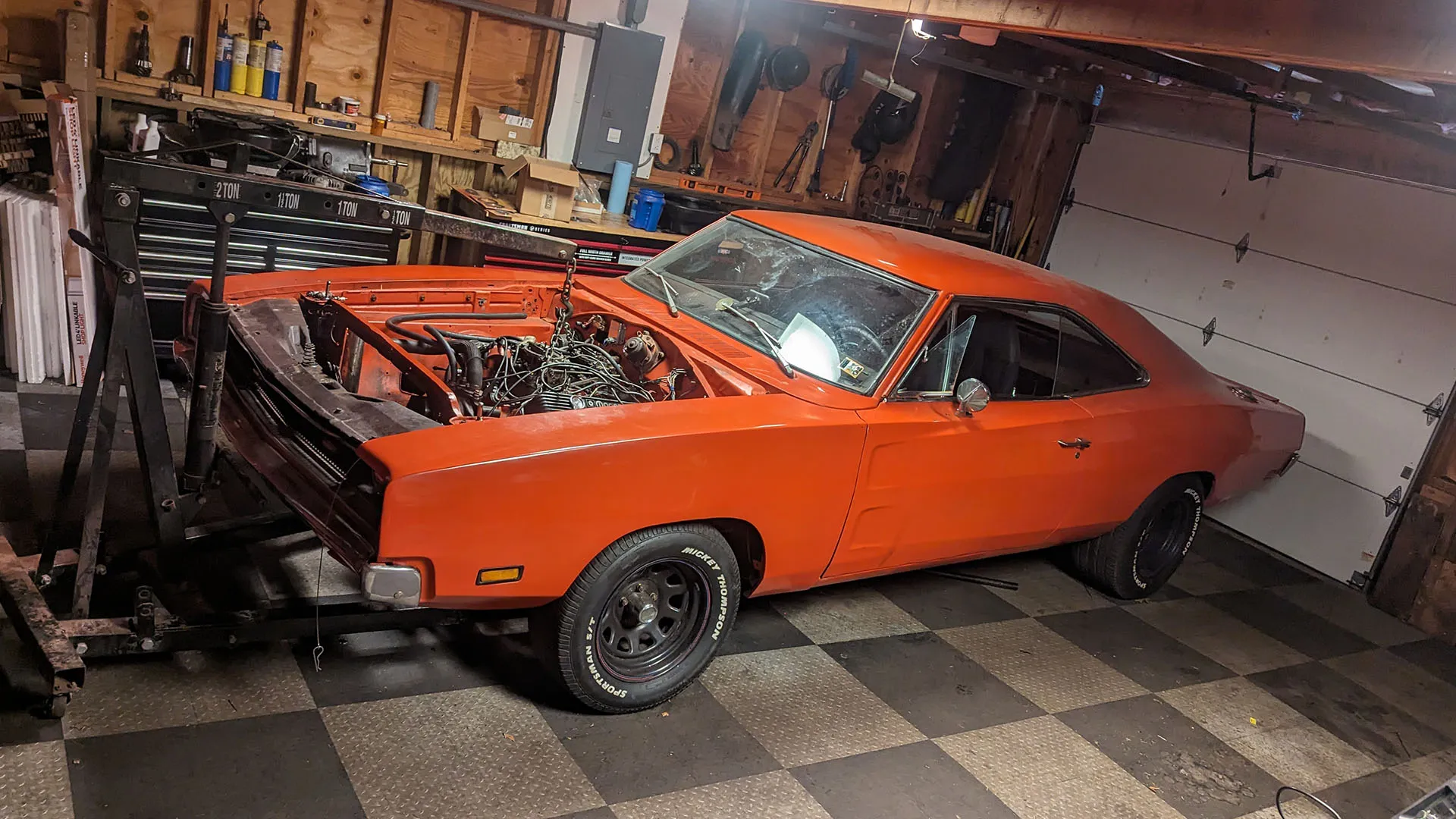

We may earn revenue from the products available on this page and participate in affiliate programs. Learn more ›
Benjamin Franklin said, “If you fail to plan, you’re planning to fail.” Obviously, he never built a hot rod. Because no matter how much planning you do, something will take you by surprise. Or in the case of installing a full Heidts Pro-G suspension on my 1969 Dodge Charger, several things that nearly derailed the whole project.
It’s been a month and a half since my last entry in this series, with a lot of hard work and long nights in between. The success I had swapping the rear leaf springs for a 4-link setup carried me into the front end swap with a serious fire under my ass. I’d actually already removed the engine when I published the last story, but just days later, everything ground to a halt.
I happen to be one of the first people outside the company installing this not-really-bolt-on kit on a ’69 Charger, and in the process, I’m running a bit outside the envelope. Heidts’ guidance has only gone so far, and I’ve asked a lot of questions to plan things out. Still, I was shocked to discover mid-install that the new suspension didn’t fit my stock brakes and the steering shaft ran into my extremely basic aftermarket headers.
Thankfully, I was able to find solutions and am now entering the final stages of the front end conversion. But I’ll be honest, it’s frustrating. I think it’s fair to say that you shouldn’t have to ask something basic like if a car’s stock brakes are compatible, and the process of how I managed these side quests is worth its own update here.

The Great Brake Hold Up
Heidts advertises the front and rear suspension systems I’m installing in my car as bolt-ins. During the 4-link swap, I learned all that really means is that the system physically bolts into place. There are a lot of modifications to make before that can happen. It doesn’t mean that it’s a simple bolt-in swap as most of us understand them to be. To be frank, that is something to expect anyway. These are inherently radical kits that do a great deal to change the dynamics of the car’s steering and suspension. No matter what marketing teams say, getting what these kits promise in a true “bolt-in” package is a bit too good to be true.

I kept that in mind before tipping into the Heidts Pro-G swap at the front end and read through the instructions a few times and asked a ton of questions well before I tore into it. I ordered an aftermarket oil pan and planned for the necessary steering modifications beforehand because they’re mentioned in the instructions. But because nothing in the instructions or product description explicitly states that brakes for a factory 1969 Dodge Charger won’t work, I assumed that what I had was fine.
We all know what happens when you assume. In the words of Samuel L. Jackson, “You make an ass out of you and ‘Umption’.” It turns out that the spindles in this kit will not work with the Charger’s brakes. You do need to buy a set specifically for this spindle separately.

Luckily, I had a pretty horrifying brake failure that inspired me to get in touch with the folks at Wilwood. We were in the middle of a conversation about swapping to a better setup when this issue presented itself. Wilwood has an awesome product look-up that you can use to search for brake kits based on the aftermarket spindles. With that, we pivoted to a setup compatible with this Heidts Pro-G system, which is here and ready to roll. In full transparency, Wilwood did sell me these brakes at cost, which totally saved my skin here.
Header Binding
While the brake situation forced me to think on my feet, it was still just a matter of changing parts and finding the cash to fund them. Unfortunately, the header situation doesn’t offer such a simple workaround.
Again, I’d already planned to make some steering modifications. The Heidts Pro-G IFS converts the car to a rack and pinion power steering setup, which changes the route the steering shaft needs to follow. The instructions do state you need to cut the steering shaft and add in some joints. The kit even came with two joints, a support bearing, and a section of 3/4-inch DD steering shaft.




Thinking I was getting ahead of things, I ran out and bought a steering column from a parts car so I didn’t have to cut the Charger’s original one up. But right as I was lowering the motor in with the header attached to start mapping things out, I found the headers I had would not work with this system.
I have a pretty standard set of headers for the 440 in my B-body Mopar. I’m not sure who makes them, but they’re far from radical. They’re a used painted set that came with a 413 cubic-inch RB engine I bought a while back. They’ve got 1-7/8-inch runners and follow a pretty generic layout that you see all over the place in terms of headers for this application. Still, they won’t work with Heidts’ Pro-G system.
The problem is that the header’s number three runner sits exactly where the new steering coupler connects to the steering box. Even if I were to clearance them with a hammer, the steering shaft would require multiple extreme angles to connect. So, I needed to come up with something new.
Forging a Header
There are no compatible part numbers given in the instructions or parts description. There’s no mention of aftermarket headers not working either or even what path the steering shaft has to follow. The only information I have to run on is what is right in front of me.
The first thing I did was start shopping for headers. Hooker’s Super Comp headers do show some serious promise. That’s because the number five runner comes up and over number seven, with three shifting back below cylinder five. This gives plenty of room for the steering shaft. However, the Pro-G IFS also shifts the engine rearward. Knowing this, I got some blueprints from Hooker’s tech line. That number five runner comes really close to the firewall on a stock setup. It might touch with the Pro-G IFS.
Rather than buying a $600 set of headers and possibly having to bash them with a hammer, I decided to modify what I have. I grabbed some elbows and sections of exhaust pipe from the local parts store and started cutting and fitting things up. Eventually, I did position the number three runner so the steering shaft could hook up with a far less severe angle in it.

Unfortunately, the newly-routed runner is still in a pretty bad spot. Again, the box is more toward the center. In order to avoid extreme angles, the steering shaft alone would come really close to the header. And because I needed a bulky double-jointed coupler to connect right where the runner sits, I needed to free up some room with a torch and a hammer.
Even if it’s not as clean as it would be with factory manifolds or custom headers, what I came up with works. I’m not worried about power loss with the big dent because there are tests to prove that it just doesn’t matter all that much. It is ugly, though. I eventually want to come back and build a set of headers that are more presentable. Still, these homemade headers are good enough for me to finish up this project. Which I’m finally ready to do after successfully routing the steering shaft around them.
I’m Back, Baby
As I write this, the car is once again sitting on its own two wheels. The brakes are in and functional. The steering is connected and free of binding. It’s been a long and brutal few months. Thankfully, I’m gearing up to put the Charger back into commission.
A few things need to take place outside of the general assembly. I need to finish welding and painting the headers. That cheap double-universal joint I used to mock things up needs to be replaced. I’ve got to do a wheel alignment, and a few other odds and ends need handling. Still, I’m feeling strong. I did test fit the rest of the driveline. This does look to be the last of the major hurdles to overcome—knock on wood.
Heidts definitely needs to add a few more details to the instructions and parts description regarding the issues that held me up. It should declare that you need a custom set of headers or factory manifolds and new brakes for this kit to work. And though the instructions do tell you that a different oil pan is also needed, that too should be listed right on the website. Otherwise, customers are going to be taken by surprise like I was.

Finding that some radical changes need to be made despite this kit being advertised as a bolt-in is really frustrating. It’s also incredibly expensive. Hadn’t I been able to reroute that header myself or had contacts at Wilwood, I’d have at least a few grand more into solving these problems. Even if this kit does make some really big, promising changes to the car and some hiccups are to be expected, these are the sort of things you need to know upfront. That said, I’m told I’m one of the first people to have their hands on the Heidts Pro-G IFS for this application. This whole review is serving as part of the later stages of research and development. My experiences will help future customers.
These were some major setbacks, but I’m still all sorts of fired up. The car’s poised to be a whole new animal with the Heidts Pro-G system beneath it. Not only that, I’ve used my downtime to handle some other jobs that need doing. That includes fixing some interior lighting issues, upgrading to a different steering wheel, and fixing some leaks. I even recurved my distributor to run a little hotter. Suffice it to say that the car will be better in every regard when it finally hits the road.